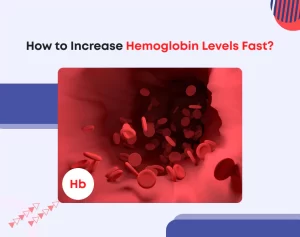
10 Surprising Facts About White Blood Cells
White blood cells (WBCs) play a crucial role in our immune system, defending our bodies against infections and diseases. While they may be tiny, these remarkable cells have some surprising characteristics and functions. In this article, we delve into the world of white blood cells to explore fascinating facts that shed light on their complexity and importance in maintaining our health.
1. Diverse Army of Defenders
White blood cells encompass various types, each with unique functions. Neutrophils, the most abundant type, are first responders to infection. Lymphocytes, including B cells and T cells, contribute to long-term immunity. Monocytes act as scavengers, clearing out debris and pathogens. Eosinophils and basophils specialize in fighting parasites and allergies, respectively. This diverse army of defenders showcases the remarkable adaptability of white blood cells in addressing different threats.
2. Production Centers
Bone marrow serves as the primary production site for most white blood cells. However, some lymphocytes mature in the thymus gland, earning the name “T cells.” Remarkably, the body produces billions of white blood cells daily, ensuring a constant supply for immune responses.
This continuous production underscores the significance of these cells in maintaining a robust defense system.
3. The Power of Chemotaxis
White blood cells possess an extraordinary ability known as chemotaxis, allowing them to navigate toward infection sites. Chemical signals released by injured or infected tissues attract these cells to the precise locations where their services are needed most.
This intricate navigation system ensures a targeted response and efficient elimination of pathogens.
4. Phagocytosis: Cellular Pac-Man
One of the most impressive capabilities of white blood cells is their phagocytic ability. Some types, such as neutrophils and monocytes, engulf and digest invading bacteria, fungi, and cellular debris.
They essentially act as “cellular Pac-Man,” devouring pathogens and cleaning up damaged tissues. This essential process helps limit the spread of infection and supports the healing process.
5. Antigen-Presenting Superheroes
Dendritic cells, a type of white blood cell, play a crucial role in adaptive immunity. They capture, process, and present antigens—foreign substances—to lymphocytes, initiating an immune response. This antigen presentation is essential for the activation of specific immune cells, orchestrating an effective defense against pathogens and even cancer cells.
6. Longevity and Memory
While white blood cells have varying lifespans, some can survive for years. Memory B and T cells, generated during an initial immune response, provide long-term immunity. These cells “remember” specific pathogens they encounter, allowing for a quicker and more robust response upon re-exposure. This memory function is the foundation of vaccines, which exploit the immune system’s ability to recall and mount an effective defense.
7. Interplay with Red Blood Cells
White blood cells and red blood cells, both essential components of blood, work in harmony to maintain overall health. Red blood cells transport oxygen, ensuring the oxygenation of tissues, while white blood cells defend against infections. This interplay highlights the interconnectedness and synergy of different blood components in maintaining optimal physiological function.
8. Genetic Diversity and Blood Types
White blood cells express unique markers called human leukocyte antigens (HLAs), which contribute to genetic diversity among individuals. These HLAs determine blood types, influencing compatibility for blood transfusions and organ donations. The diversity of white blood cell markers underscores the complexity of immune responses and the importance of matching HLAs for successful medical interventions.
9. White Blood Cells in Disease Diagnosis
The examination of white blood cells can provide valuable diagnostic insights. An increased or decreased count of specific types of white blood cells can indicate various medical conditions, including infections, autoimmune disorders, and cancers. By analyzing the composition and behavior of these cells, healthcare professionals gain critical information to aid in accurate diagnosis and treatment planning.
10. White Blood Cells and Immunotherapy
Recent advancements in immunotherapy utilize the power of white blood cells to fight cancer. Techniques such as CAR-T cell therapy and checkpoint inhibitors harness the potential of modified or enhanced white blood cells to target and eliminate cancer cells more effectively. These groundbreaking therapies highlight the evolving role of white blood cells in medical advancements and their immense potential in treating diseases.
Conclusion
White blood cells are not only essential components of our immune system but also fascinating entities with remarkable capabilities. From their diverse functions and production centers to their phagocytic prowess and memory capabilities, these tiny defenders play a vital role in maintaining our health. Understanding the surprising facts about white blood cells deepens our appreciation for their complexity and underscores their significance in safeguarding our well-being.






